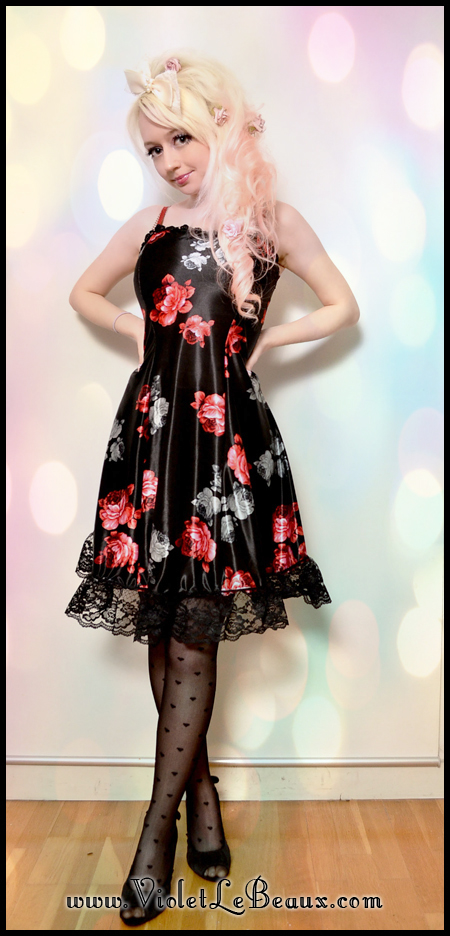|
The fabric I used was a thin satin with a really good drape to it. It was a remnant so there was only 1.5m. This pattern is good because you can add or take away fabric from the skirt to fit it into really tight spaces if you only have a little fabric left. I’ve gotten a dress out of 1m of fabric before but I prefer to work with minimum 1.5m depending on the person’s size. If there are patterns which need to be lined up or you are very particular on the grain of fabric you will need a lot more.
I don’t have a table to cut on so I have to lay it out on the floor. There’s still not much room so I usually fold in half to make things easier.

So this pattern is one I made around 8 years ago and have adapted over and over again. I don’t keep paper patterns partially because I hate working with them (paper obviously doesn’t drape like fabric) and partially because I don’t have room. Sometimes I’ll keep calico versions of patterns but most of the time I’m honestly too lazy to do versions in calico etc first. I lose interest with projects quickly so making the same dress twice has never really appealed to me. I totally understand it’s importance in the scheme of learning though and I think it’s a really great skill to learn when you’re starting out so you can find your best workflow. My attention span is something I’m trying to work on more so perhaps there will more more tutorials in the future dealing with that!
Anyway, I tend to just find a dress I know fits me with the same cut and lay it flat so I can cut around each piece. I don’t make for people other than my self often but if I am, I do the maths first to work out how much I need to add to bust/waist/hips then make the adjustments on the fly. Always cut larger than you think you need because it’s a pain to try and add more fabric later!

So time to cut the pieces. First the front:

Two sides:

Two back pieces. On the back pieces here I make sure to leave a lot extra for the zip and also for fitting it perfectly when it’s pinned.

So this dress is made of 5 pieces but two are mirror images. So from left to right is the back, side and front. The other side has a mirror of the side and back. The skirt for this one is not particularly full because of the lack of fabric I was working with.

At this point I would pin it all together and try it on to make sure it actually fit. It’s a good idea to do that after every seam to make sure you’re going in the right direction.
So let’s get to sewing and overlocking.

First I sew one side to the front.

The the other side to the front. You can see the skirt getting fuller and the shape coming into the bust now.

Next, the two back pieces go on either side.

Next I overlock all of the raw edges to seal them in. Now it’s time to deal with the back. Usually I’d be putting in a zip at this point but this dress will have a lace up back so I’ll take care of that in a bit.
First I fold the dress in half with the bad side out and work out where the bottom of the zip will be. Then I sew the bottom of the two sides of the skirt together below where the zip/laces will go.

Like so (or should that be “like sew”? ;D )…

In place of a zip I’m using some lace to put the threads through. So I turn the edges under and sew the lace up the back opening.

Like this:

It kind of looks almost like a dress now 😀

Now it’s just about the extra details. I turned the edges under on the top and stitched on a row of lace around it.

Top lace around the bodice:

Ribbon threaded to lace it at the back:

Next some ribbon for straps.

I find it’s best to put the dress on when measuring for straps and get someone to pin them in place so it has the support you want.

Then some nylon lace at the bottom. I don’t usually sew with nylon lace but cotton lace really didn’t match this fabric and was much too structured to keep the drape. Soft tulle and netting is great for bottom of the skirt details.

And that’s pretty much done!
Font:

Back:

Bottom:

Huzzah, finished! I’ve done this pattern so many times that when I’m making one for myself and actually pay attention I can get them done in a few hours. New dress in a few hours? Winner!
 
So that’s it from start to finish. I know it wasn’t an actual tutorial but hopefully this will be a decent introduction for those of you who have never made a dress before so you will know what to expect in the full tutorials later. Everyone has their preferred methods for sewing so hopefully some of you like mine!
As always, let me know if you if you have any questions and thanks for reading! |








































